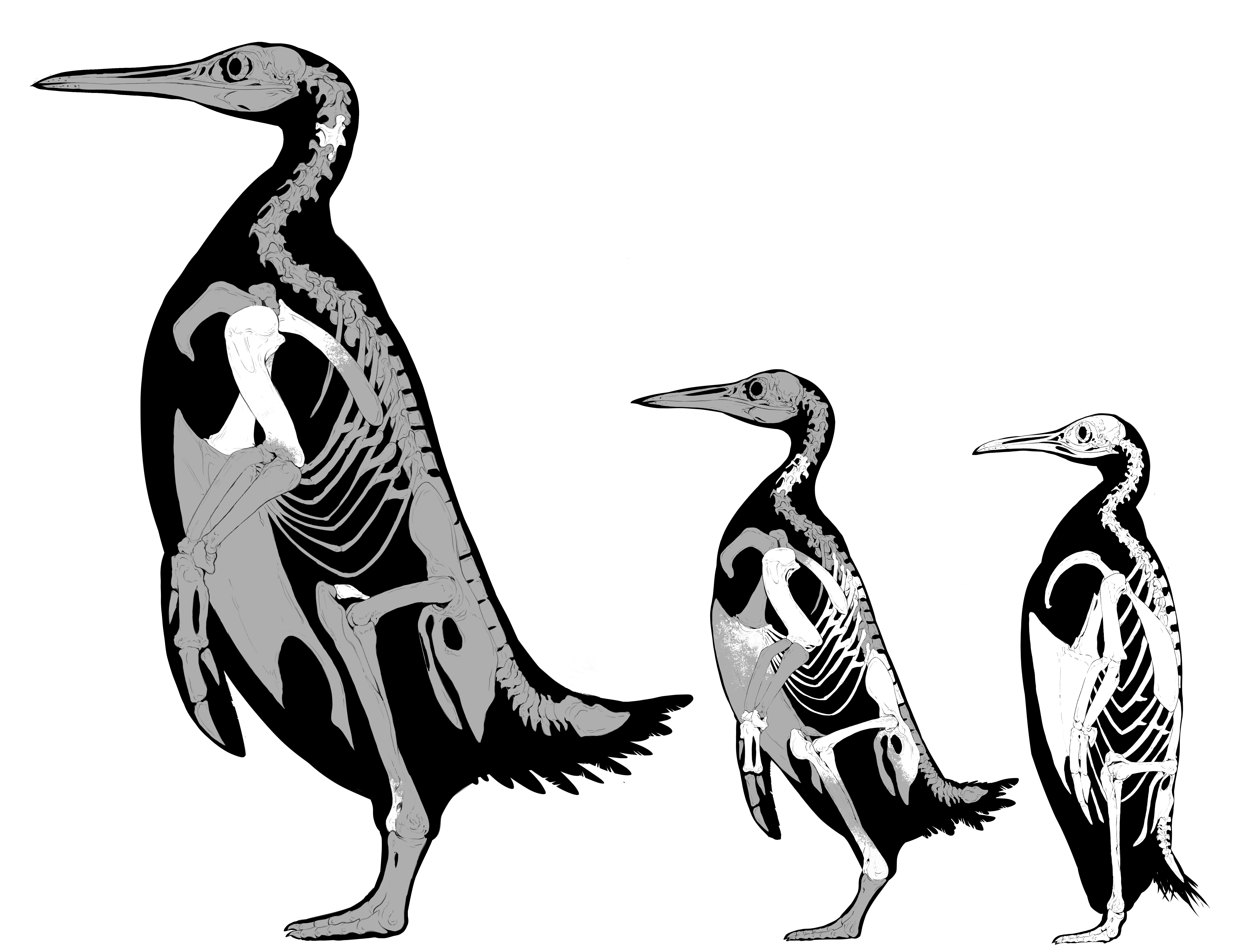When exploring some eroding boulders on the east coast of New Zealand’s South Island with his son, Alan Tennyson of the Museum of New Zealand Te Papa Tongarewa found fossil remnants of 57-million-year-old giant penguins. That would be exciting enough – but as other scientists assisted in unscrambling the finds, it became clear there were three new species, one of which was probably larger than any known member of the penguin family.
Indeed, Kumimanu fordycei, as it has been named in a new paper, is thought to have been around three times the weight of a big emperor penguin, the largest living species. Petradyptes stonehousei, which would be an impressive size on its own, is overshadowed by its larger cousin.
When the Chicxulub collision wiped out the non-avian dinosaurs, mammals were still small and land-based. It took them a while to grow big, and longer still to colonize the oceans. With the giant marine reptiles also gone, a niche was cleared for air-breathing predators. It seems penguins filled the gap, growing to an impressive size.
The rocks are 59.5-55.5 million years old, from when the world was still less than ten million years out from the extinction event, and the penguins were hitting their maximum.
The discoveries are very incomplete, so the authors have needed to extrapolate the penguins’ weight from the size of a few bones. Based on its flipper bones, they concluded K. fordycei weighed in at 154 kilograms (340 pounds). For comparison, emperor penguins, the largest ones around today, weigh between 22 and 45 kg (48 to 99 lbs).
With a sample of just one, we don’t even know if it was a particularly large member of its species.

The height estimates are vaguer, but this image gives a sense of the weights of penguins, living, dead and fictitious. Image credit: (C) IFLScience using data from Tess Cole, CC BY-ND, and Dr Simone Giovanardi.
“Fossils provide us with evidence of the history of life, and sometimes that evidence is truly surprising,” said co-author Dr Daniel Field of Cambridge University in a statement. “Many early fossil penguins attained enormous sizes […] Our new species, Kumimanu fordycei, is the largest fossil penguin ever discovered – at approximately 350 pounds, it would have weighed more than [basketball player] Shaquille O’Neal at the peak of his dominance!”
We don’t know much about K. fordycei’s lifestyle, but it is unlikely basketball would have been its natural game. You probably wouldn’t want to take it on at water polo, however.
“Kumimanu fordycei would have been an utterly astonishing sight on the beaches of New Zealand 57 million years ago, and the combination of its sheer size and the incomplete nature of its fossil remains makes it one of the most intriguing fossil birds ever found,” Field said.

Skeletal illustrations of Kumimanu fordycei, Petradyptes stonehousei, and a modern emperor penguins. Bones of which we have specimens are in white. Image Credit: Dr Simone Giovanardi.
Although less fearsomely sized, we know considerably more about the 50 kg (110 lb) P. stonehousei, of which five specimens have been found in the rocks Tennyson identified. Some bones from a smaller and yet-to-be-described penguin were found in the same rocks.
The absence of large competitors gave the penguins room to grow, but the authors think the driver may have been to conserve heat before the refinement of what have become epically protective feathers. These big penguins may also have been able to dive deeper than their modern counterparts, more like modern seals or whales.
Early giant penguin fossils are all from New Zealand, but the paper notes this may just mean suitably aged rocks from the rest of the southern hemisphere haven’t been examined in the same depth.
Both species had relatively primitive flippers whose muscle attachments reveal their descent from flying birds. Subsequently, the Spheniscidae family developed more flippers better suited to moving through water.
Kumimanu is an existing genus, while the species name is a tribute to Professor Ewan Fordyce of the University of Otago, a leader in the field of extinct penguin studies. Petradyptes means “rockdiver” and Stonehousei honors Dr Bernard Stonehouse who braved Antarctic conditions to uncover the emperor penguin’s breeding cycle.
The paper is published in The Journal of Paleontology
Source Link: New Giant Extinct Penguin Could Be The Largest Of All Time